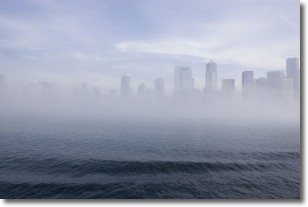Weather Alert in California
Special Weather Statement issued July 29 at 8:43PM PDT by NWS Los Angeles/Oxnard CA
AREAS AFFECTED: Catalina and Santa Barbara Islands; San Luis Obispo County Beaches; Santa Barbara County Central Coast Beaches; Santa Barbara County Southwestern Coast; Santa Barbara County Southeastern Coast; Ventura County Beaches; Malibu Coast; Los Angeles County Beaches; San Miguel and Santa Rosa Islands; Santa Cruz and Anacapa Islands
DESCRIPTION: ...TSUNAMI ADVISORY IS IN EFFECT FOR THE FOLLOWING LOCATIONS, ALL COASTAL AREAS OF LOS ANGELES...VENTURA...SANTA BARBARA...AND SAN LUIS OBISPO COUNTIES... * UPDATES... There have been no significant changes since the last statement. * LOCAL IMPACTS... A tsunami capable of producing strong currents that may be hazardous to swimmers, boats, and coastal structures is expected. Widespread inundation is NOT expected. However, damage at the harbors will be possible. Surging water in and out of harbors can cause boats and docks to detach from structures. Port San Luis and Morro Bay will be of particular concern for these impacts, however other locations anywhere in the Advisory area will be susceptible to impacts including coastal flooding. * RECOMMENDED ACTIONS... If you are located in this coastal area, move off the beach and out of harbors and marinas. Do not go to the coast to watch the tsunami. Be alert to instructions from your local emergency officials * FORECAST TSUNAMI START TIMES... Port San Luis California 1235 AM PDT on Jul 30 Santa Barbara California 1245 AM PDT on Jul 30 Los Angeles California 0100 AM PDT on Jul 30 Tsunamis often arrive as a series of waves or surges which could be dangerous for many hours after the first wave arrival. The first tsunami wave or surge may not be the highest in the series. * FORECAST TSUNAMI DURATION... Port San Luis California 24 hrs * FORECAST PEAK TSUNAMI WAVE HEIGHTS... Port San Luis California 2.0 to 3.7 ft Santa Barbara California less than 1 ft Los Angeles California less than 1 ft * PRELIMINARY EARTHQUAKE INFORMATION... An earthquake occurred with a preliminary magnitude of 8.8. * TIDE INFORMATION... Port San Luis...Low tide of 2.0 ft at 831 PM PDT on Jul 29. High tide of 3.9 ft at 201 AM PDT on Jul 30. Santa Barbara...Low tide of 2.1 ft at 756 PM PDT on Jul 29. High tide of 3.9 ft at 129 AM PDT on Jul 30. Los Angeles...Low tide of 2.0 ft at 728 PM PDT on Jul 29. High tide of 4.0 ft at 101 AM PDT on Jul 30. This product will be updated as new information becomes available. Stay tuned to your local news source and NOAA weather radio for further information and updates.
INSTRUCTION: N/A
Want more detail? Get the Complete 7 Day and Night Detailed Forecast!
Current U.S. National Radar--Current
The Current National Weather Radar is shown below with a UTC Time (subtract 5 hours from UTC to get Eastern Time).

National Weather Forecast--Current
The Current National Weather Forecast and National Weather Map are shown below.

National Weather Forecast for Tomorrow
Tomorrow National Weather Forecast and Tomorrow National Weather Map are show below.

North America Water Vapor (Moisture)
This map shows recent moisture content over North America. Bright and colored areas show high moisture (ie, clouds); brown indicates very little moisture present; black indicates no moisture.

Weather Topic: What is Fog?
Home - Education - Cloud Types - Fog
 Next Topic: Fractus Clouds
Next Topic: Fractus Clouds
Fog is technically a type of stratus cloud, which lies along the
ground and obscures visibility.
It is usually created when humidity in the air condenses into tiny water droplets.
Because of this, some places are more prone to foggy weather, such as regions
close to a body of water.
Fog is similar to mist; both are the appearance of water droplets suspended in
the air, but fog is the term applied to the condition when visibility is less than 1 km.
Next Topic: Fractus Clouds
Weather Topic: What is Freezing Rain?
Home - Education - Precipitation - Freezing Rain
 Next Topic: Graupel
Next Topic: Graupel
Freezing rain is a condition where precipitation which has fallen in the form of
water droplets reaches temperatures which are below freezing and freezes upon
coming into contact
with surface objects. The result of this precipitation is a glaze of ice which
can be damaging to plants and man-made structures. A severe onset of freezing
rain which results in a very thick glaze of ice is known as an ice storm.
Next Topic: Graupel
Current conditions powered by WeatherAPI.com




